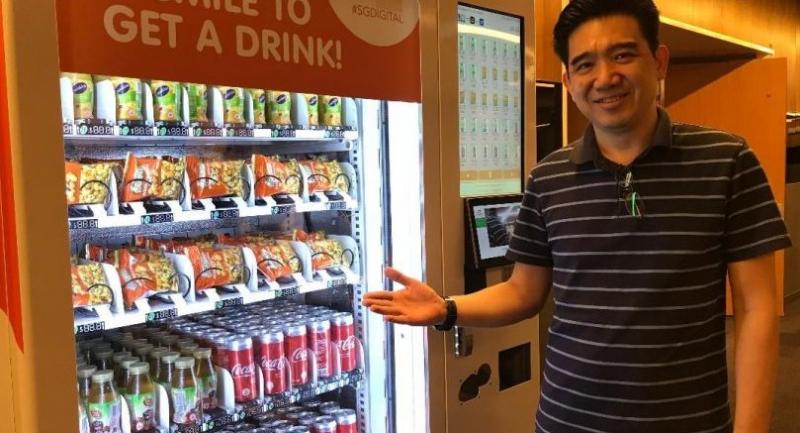Purchase with a smile – or palm print

MAKING an e-payment via their smile or palm are new ways to enable customers to pay for goods and products, or other fee charges in the digital era.
Steve Chia’s firm, for example, has utilised artificial intelligence technology to develop a facial analytics system and software that integrates with other software to support biometric payments using smart vending machines.
Le Tach Pte’s system can track both females and males, as well as allow customers to pay via their smile. The result is that customers can now access and purchase goods from a smart vending machine by making a facial recognition payment – after first registering their face with their bank accounts. When they want to purchase products from a smart machine, they then need only smile in front of the machine. The machine will identify the customer and allow them to automatically pay the product charge.
The firm can now boast around 1,000 vending machines in Singapore, of which about 40 per cent are embedded with Internet of Things technology (IoT). The firm’s next step is to apply its facial recognition technology to support their older vending machines.
Octobox offers an alternative approach that also draws on digital technology – an automated vending kiosk that allows biometric palm payment. Customers who want to participate in the new e-payment system set up a personal account by registering a scan of their palm, explains Ng Kiat Seng, operations director at Octobox. When customers then visit a shop that has signed up for their biometric palm-payment vending machines, such as to purchase a food item, they just scan their palm at the display screen. The vending machine then will identify and verify the customer’s payment before they decide which products to select.
“Palm-print recognition technology can be deployed in many ways. As palm vein patterns are unique to every individual, a high level of accuracy and security is ensured,” said Ng. “Customers who want to participate in biometric payment just register for retail credit and their palm print will be taken. After registration, customers may access the kiosk door by scanning their palm print for identify verification. Once verified, the door will be unlocked automatically and once done, the door will close automatically. Payment will be auto-deducted once the door is closed and a bill summary (digital receipt) will be sent to the user’s registered email. It is easy to use.”
As well, “the system can track customer demand”, said Ng.
The smart-vending kiosk is embedded with a Wi-Fi connection. It is able to sell fragile items such as eggs, salads and fresh food. Customers can touch and feel the item before it is opened. As well, the system collects data and tracks sales, leading to increased customer satisfaction level through accurate demand forecast. As result, shops and businesses are able to understand the market conditions, identify market targets, and ensure cost savings by using corporate analytics and marketing analytics.
The firm has now partnered with DBS bank to provide smart vending machines. Its target markets are offices, national parks, condominiums, schools, hospitals and industrial areas.
Ng said the firm has spent one year to develop the Octobox smart vending kiosks, and will roll them out in Singapore starting next month with the target of 100 smart kiosks in the city by next June.
The firm has plans to next expand its smart vending kiosks to Taiwan and Malaysia.
